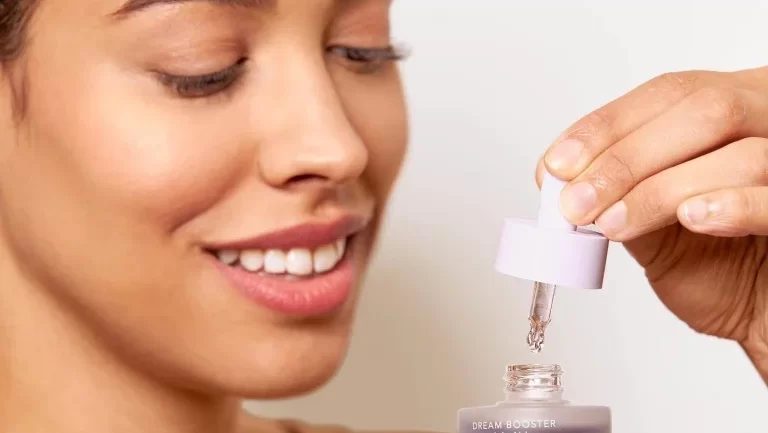
Retinol is renowned for its ability to improve skin texture, reduce fine lines, and combat acne. However, its powerful effects often come with irritation, dryness, and redness — especially for those with sensitive skin. If you love the benefits of retinol but struggle with its harshness, you’re not alone.
Fortunately, there are several retinol alternatives for sensitive skin that deliver similar results with less irritation. This article explores gentle, effective substitutes, how to incorporate them safely into your routine, and how they work alongside other skincare practices — including how to double cleanse properly for optimal absorption and minimal irritation.
Why Look for Retinol Alternatives?
Retinol can cause side effects like peeling, redness, and sensitivity, particularly if you have:
-
Sensitive or reactive skin
-
Rosacea or eczema
-
Dry or compromised skin barrier
-
First-time users nervous about irritation
While retinol remains a gold standard in anti-aging and acne treatment, alternatives can offer a gentler approach with similar benefits.
Top Retinol Alternatives for Sensitive Skin
| Alternative | Benefits | How It Works | Ideal For |
|---|---|---|---|
| Bakuchiol | Anti-aging, brightening, anti-inflammatory | Plant-based compound that mimics retinol effects without irritation | Sensitive, reactive, and dry skin |
| Niacinamide | Reduces redness, improves skin barrier, brightens | Vitamin B3 that calms and repairs skin | All skin types, especially sensitive and acne-prone |
| Azelaic Acid | Fades hyperpigmentation, reduces inflammation | Antimicrobial and antioxidant properties | Rosacea, acne, sensitive skin |
| Peptides | Stimulates collagen, firms skin | Amino acid chains that support skin structure | Aging, sensitive skin |
| Alpha Arbutin | Lightens dark spots and evens tone | Inhibits melanin production | Hyperpigmentation and sensitive skin |
| Polyhydroxy Acids (PHAs) | Gentle exfoliation and hydration | Larger molecules than AHAs, penetrate slowly | Sensitive and dry skin |
How to Incorporate Retinol Alternatives Safely
Sensitive skin demands a gentle approach, especially when introducing active ingredients. Here’s how to build an effective routine:
-
Start Slowly
Begin with low concentrations (e.g., 0.5% bakuchiol, 2–5% niacinamide) and apply every other night. -
Cleanse Properly
Use gentle cleansers and follow best practices like how to double cleanse properly to avoid stripping skin’s natural oils. -
Apply Alternatives at Night
Most retinol alternatives work best overnight. Apply after cleansing and before moisturizing. -
Use Sunscreen During the Day
Protect your skin daily with broad-spectrum SPF to prevent UV damage and irritation. -
Avoid Combining Too Many Actives
Sensitive skin can get overwhelmed easily. Use one or two actives max and introduce new products gradually.
Sample Sensitive Skin Routine with Retinol Alternatives
| Time | Step | Product Type | Notes |
|---|---|---|---|
| Evening | Cleanser | Gentle oil-based or cream cleanser | Start with double cleansing if wearing makeup or SPF |
| Evening | Second Cleanser | Mild foaming or gel cleanser | Removes residue without irritation |
| Evening | Active Serum | Bakuchiol or niacinamide serum | Use alternate nights if new |
| Evening | Moisturizer | Fragrance-free, calming | Locks in moisture and soothes skin |
| Morning | Cleanser | Gentle, hydrating | Prepares skin for sunscreen |
| Morning | Sunscreen | Mineral-based SPF 30+ | Essential to protect skin |
Benefits of Each Alternative in Detail
Bakuchiol
Often called “natural retinol,” bakuchiol is a plant-derived ingredient with antioxidant and anti-inflammatory properties. Studies show it improves fine lines and skin texture without the irritation associated with retinol.
Niacinamide
A multi-tasker that strengthens the skin barrier, reduces redness, and regulates oil production. It’s great for sensitive skin and complements other actives well.
Azelaic Acid
Works to reduce inflammation and clear acne while fading pigmentation. It’s well-tolerated by sensitive and rosacea-prone skin.
Peptides
These amino acids stimulate collagen production and help firm the skin, reducing the appearance of wrinkles.
Alpha Arbutin
Brightens skin tone and helps with hyperpigmentation, making it a gentle alternative to harsh brightening acids.
PHAs
These are mild exfoliants that hydrate while gently sloughing off dead skin cells, suitable for those who can’t tolerate stronger AHAs or BHAs.
FAQs
Q1: Can I use retinol alternatives with retinol?
Generally, it’s best to avoid layering retinol with other actives to minimize irritation. However, niacinamide pairs well with retinol and may reduce sensitivity.
Q2: How long does it take to see results from retinol alternatives?
Results typically appear within 4 to 12 weeks, depending on your skin type and consistency.
Q3: Are retinol alternatives safe during pregnancy?
Yes, most retinol alternatives like bakuchiol and niacinamide are considered safe during pregnancy, unlike retinol itself.
Q4: Can I use retinol alternatives in the morning?
It depends on the ingredient. Niacinamide is fine for morning use, while bakuchiol and azelaic acid are best used at night.
Q5: How do I combine these alternatives with cleansing?
Follow a gentle cleansing routine, and for best absorption and minimal irritation, learn how to double cleanse properly to remove makeup and impurities without damaging your skin barrier.
Final Thoughts
For those with sensitive skin, retinol alternatives offer an excellent way to enjoy anti-aging and skin-brightening benefits without the common side effects of irritation. Ingredients like bakuchiol, niacinamide, and azelaic acid are scientifically backed and skin-friendly.
Remember that a gentle cleansing routine—such as how to double cleanse properly—is crucial when using any active ingredients to maintain skin health and maximize benefits.
If you’re new to active skincare or have sensitive skin concerns, consider patch testing new products and introducing one ingredient at a time.

